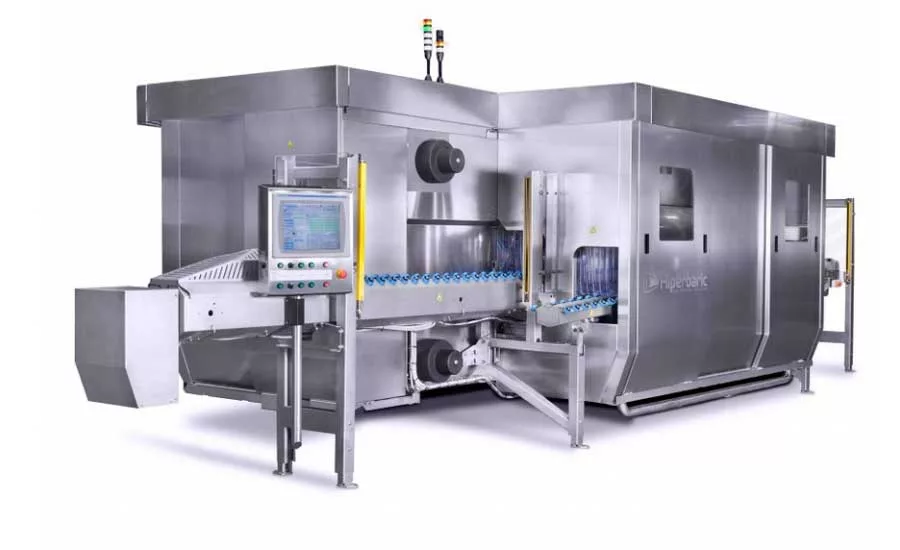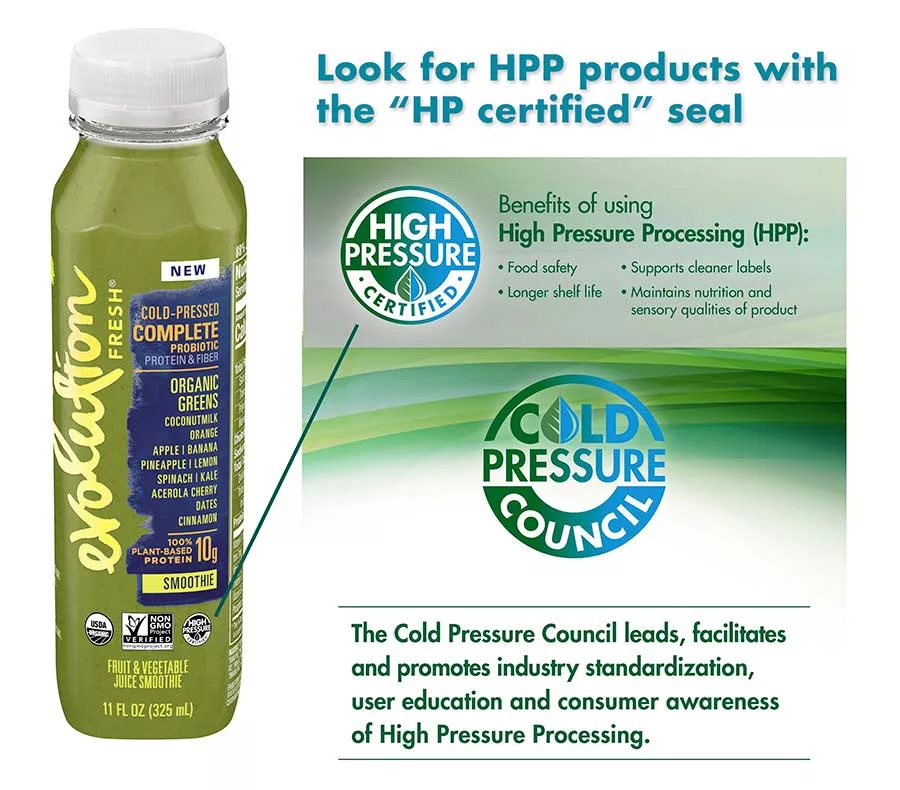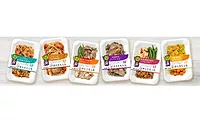High-Pressure Processing
Cold Pressure Council offers updated guidelines for HPP
Cold Pressure Council’s “HPP Certified” seal indicates freshness and a food-safe, clean-label product


Evolution Fresh’s Fruit & Vegetable Juice Smoothie has the new CPC “HPP Certified” seal, as well as USDA’s “Organic” seal. Look for more “HPP Certified” labels as food and beverage companies adopt Cold Pressure Council’s certification. Sources: Evolution Fresh and Cold Pressure Council.

HPP processing for common foods considerably extends shelf life, giving supply chains a little latitude plus keeping products much longer in your refrigerator. Source: “HPP Fact Sheet,” JBT/Avure.

The JBT/Avure Model AV-M is a modular HPP system that is upgradable in three steps: from 20 million lbs./year (AV-20M), 30 million lbs./year (AV-30M) and 40 million lbs./year (AV-40M). Source: JBT/Avure.
Since June of last year, the Cold Pressure Council (CPC) has been busy with finalizing its organizational structure, and is moving on to provide guidelines for the application of HPP to additional food types.
Guidelines for juice are available now, and according to JBT/Avure Chief Marketing Officer Lisa Wessels, the CPC will release guidelines for proteins and sauces, most likely in April. Wessels expects that CPC will have guidelines for all food and beverage applications available by the end of this year. JBT/Avure is a cofounder of the CPC.
High pressure processed food is currently a $12 billion industry and expected to double in size over the next six years, says Wessels. HPP is used to process a wide variety of refrigerated foods including meat, poultry and seafood; a variety of fruit and vegetable-based dips, sauces and spreads; as well as juices and other beverages.
While these traditional HPP food categories are expected to continue their steady growth in the market, new HPP food categories are emerging and expected to see accelerated growth in coming years. Some examples include drinkable soups and functional beverages; ready meals and ready-to-cook meats; dairy-based dressings and snacks; baby foods and pet foods.
Purchasing HPP equipment is a serious investment, and unless it’s processing food continually, cost justification can be difficult. So, many processors who have purchased equipment and have off-line periods now schedule HPP processing for third-party food processors—a service called toll processing. JBT/Avure and Hiperbaric, key suppliers of HPP equipment, both list toll processors on their websites.
One issue with HPP equipment has been the lack of scalability of equipment and available floor space. JBT/Avure launched the AV-M last September, which is, like its predecessor, the AV-X, a machine that quickly scales for fast-growing food companies, says Wessels. With a slightly smaller footprint than the AV-X, the AV-M enables food processors to buy the machine that fits their current production needs, and as the company grows, the machine expands to keep up with increased production—all without the expense or added floor space of a second machine. The AV-M easily upgrades from 20 million pounds per year to 30-40 million pounds per year with the highest possible throughput, adds Wessels.
For many years, HPP has been used on several products with many benefits—for example, salsa having more than a 30-day shelf life in the refrigerator, once the product’s been opened. The problem was that unless a purchaser read the fine print on the label, the typical reaction was questioning why the USE BY date was so far in the future compared to other refrigerated foods. That is changing, says Wessels. The “High Pressure Certified” seal is on Evolution Fresh juice now, and is carried at Starbucks. Suja is slated to bear the seal as well, says Wessels. Expect to see the seal on many other HPP products soon as producers pick up on it.
The CPC Annual Conference meets June 18-20 in Chicago, and Wessells says there will be general and breakout sessions, though the schedule has yet to be finalized. Sessions will cover technology and update attendees on food safety and HPP. Look for more information to come on the CPC website.
Looking for a reprint of this article?
From high-res PDFs to custom plaques, order your copy today!








